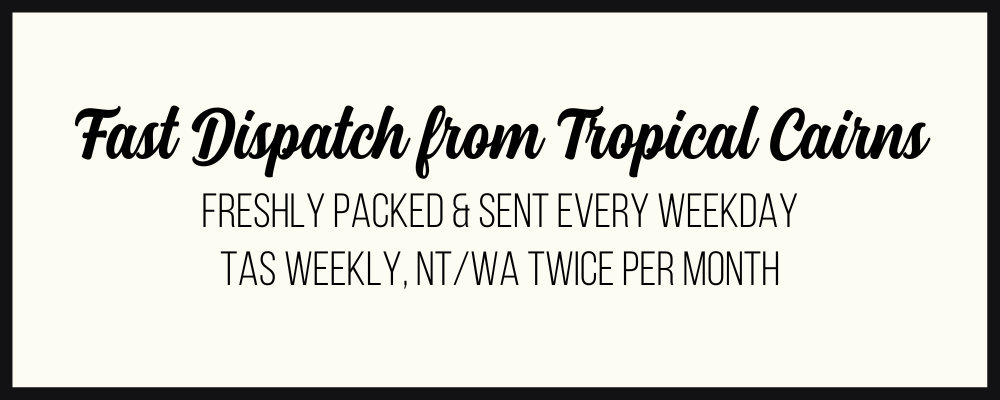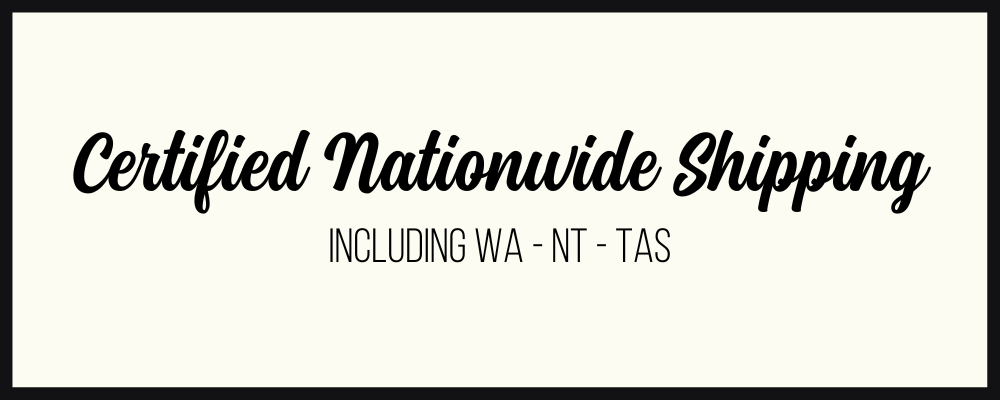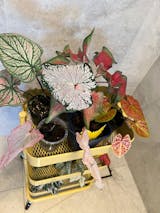Fertiliser and Pest Products: Houseplant Care Guide
Beginner's guide to fertiliser and pest products
Now that we've covered light, water, and soil & repotting, next up is fertiliser and pest products. In this section we will explain the basics of what fertiliser does and which products are useful to use for common plant pests.
Throughout this entire guide we will provide quick tips, i.e. key take-outs/summaries at the start, for those who are time poor or just want the highlights, followed by the details, so you can pick and choose how you learn.

Quick tips - the key takeouts you need to know
- Fertiliser is a useful, but not essential product for your plant's health
- Always follow the instructions for diluting fertiliser to avoid fertiliser burn, and avoid using it on ferns
- Change up how you use fertiliser throughout the year in line with the growing & non growing seasons of the plant
- It never hurts to dilute fertiliser more than the packet says, but diluting less can cause root and leaf damage
- Common plant pests include: fungus gnats, mealybugs, scale, spider mites and rust fungus
- Some great pest treatment products to have on hand are neem oil, insecticidal soap, and fungicide

All about fertiliser
As we talked about in the soil & repotting section, houseplants live within the confines of the pot they're in, so they're reliant on outside sources to receive nutrients. Compared to plants that live outside, which use various organic sources such as decaying vegetative matter, animals droppings and bacteria in the soil in order to keep a fresh supply of nutrients year-round.
Using fertiliser allows you to deliver the three essential elements plants need - nitrogen, phosphorus, and potassium (referred to as NPK per the periodic table of elements) - as well as other trace elements useful for plant growth and health to your plant, without you having to dump decaying material into the pot (which we assume you probably aren't too keen to do). So that's why we use the ready-made products!
As a side note, the reason we've put this section after light, water and soil is because whilst fertiliser is super useful, it is very possible for a plant to live years without it as long as it receives its two top needs of light and water. So if you've gotten this far in our guide, but going out to buy then use a fertiliser sounds a bit too-hard basket right now - that's totally cool, and your plant will be a-okay. But we'll keep chatting about how to choose and use one so you can see how easy it is to use to give your plants a boost - if you so choose.
Choosing a fertiliser
There's loads of great options out there, ranging from products such as Thrive or Powerfeed which you can even buy at major supermarkets these days, to specialist products designed for indoor plants. Most commercially available plant fertilisers will be just fine to use on any regular houseplants, and usually come in two formats:
- Liquid fertiliser which is in a concentrate form and instantly release nutrients to the plant, and
- Slow-release fertiliser, which as the name implies, releases nutrients over time (usually around 3 months). It comes as a soil additive - small balls or pebbles you mix or scratch into your potting mix
Using a fertiliser
Whilst fertiliser is a great product, too much of good thing can be, well, too much. Just like humans get full from too much food, plants can only take up so much fertiliser at once. If you're using liquid fertiliser it's important to follow the instructions on the packet in terms of how to dilute the product. This will help avoid fertiliser burn, which is what happens when a plant is given too much in one dose. In this scenario, essentially what happens is that the plant uses as much of the nutrients as it can, but in trying to absorb more than it can use, the roots shrivel up and can get damaged to the point where they're unable to absorb water.
It also never hurts to dilute the fertiliser concentrate more than the instructions recommend - this is something we here at Uprooted do often with our own personal collection.
A few tips on how to use fertiliser
Liquid fertiliser
There's a variety of ways to incorporate fertiliser into your plant care but we recognise that it's very confusing to research especially when you're starting out. To keep it simple, we'll outline our advised schedule for beginners with indoor plants, as well as some general tips on how to use it.
Houseplant liquid fertiliser schedule
- During Spring, use half the diluted strength every 2 to 4 weeks for the first three times you fertilise, then regular strength every 2 to 4 weeks after that
- During Summer, use fertiliser once every two to four weeks at watering time
- During Autumn, use fertiliser once a month
- During Winter, which is when plants go semi or fully dormant, cease fertiliser use as plants will be growing more slowly, if at all. Some people choose to continue fertilising during Winter, in which case you may wish to fertilise at quarter or half strength every month
General usage tips for liquid fertiliser
- A simple method of using it is to mix it with water (per the dilution instructions) in a watering can and then water your plant with the mixture
- Avoid fertilising a plant that is extremely thirsty - it's best to water it first, let it bounce back, and then fertilise it
- Avoid using it on ferns - they're quite prone to fertiliser burn, which will show up as fried frond ends
- Feel free to dilute more than the instructions say, but avoid using more of it than directed - as we said, the right amount is great, and too much can cause root damage
Slow release fertiliser
Aside from liquid fertiliser, slow release fertiliser is another popular product and easily found at all nurseries. Unlike liquid fertiliser, you can use this year round because of how it unlocks nutrients over a space of time, rather than all at once
To use:
- You can mix it into soil when you're repotting a plant - sprinkle it close to the roots
- To top it up (e.g. every 3 months when it runs out) without repotting the plant, you can scratch it into the top layer of the soil
So that answers why to use fertiliser, how to apply it (and when), plus the different options available. And remember, while it is useful for houseplant growth and health, your plants will not suffer if they miss a dose or if you don't fertilise them at all - so don't beat yourself up if it's something you haven't found time for!
Plant pest products
Plant pests. We all get them and they're probably more than a little over-hyped in terms of how bad they are for your plants. When you bring a plant inside, you bring in its beauty, its rawness, its wildness - you get it all. So that means amazing beautiful foliage, and also the occasional pest. Now to talk about pests would warrant a whole other chapter, but for now we are going to keep it simple, and talk about a few good all-rounder products that are useful for battling the main plant pests you'll encounter, being: fungus gnats, spider mites, mealybugs, scale and rust fungus.
And the core products we're going to chat about is neem oil, insecticidal soap and fungicide, all of which are easily and widely available at all good nurseries, hardware stores, and online plant specialist stores.
Neem oil
This organic solution usually comes in concentrate form, or diluted spray form. We prefer to buy it as concentrate then you can make it to use as needed, mainly as a root drench or as a foliage spray. depending on the pests you're battling. It works to stop a pest from feeding causing it to die from starvation, essentially!
To treat fungus gnats (aka those small black buzzing things that get in your face), we recommend:
- Three soil drench treatments, spaced a week or so apart from one another
- Soil drench means to water the plant's soil until water runs out the base - this ensures all the soil is treated with the solution, in order to reach the fungus gnat larvae that live deep within the soil.
It's quite common for people to use neem oil in spray form and find it ineffective and this is because spraying the soil will not reach all the larvae in the potting mix, and they'll eventually dig their way out and fly out as adults.
To treat other sucking insects such as scale, aphids, mealybugs, and spider mites, use it as a foliage spray (make it up from the concentrate per the instructions or use the pre-made spray) and spray it over the foliage of the plants, ensuring you cover both the top and bottom of the leaves.
Insecticidal Soap
This product works on impact, suffocating the pest it comes into contact with. This is an effective product, is used in spray form, and is a safe choice if you're worried about animals or children coming into contact with the treated plant. We recommend this for pests including mealybugs, scale, aphids and spider mites.
Fungicides
Whilst less common in Australia than the pests mentioned earlier, rust fungus is a common-ish affliction for some houseplants - particularly for Monstera deliciosa and Devils Ivy - and easily noticed by its rust-like appearance on a leaf. So if this is something you notice on your plants, you can use a fungicide to treat the issue. They come in a variety of dilutions so we recommend you follow the instructions on the packet for this. All good nurseries and hardware stores will have a range of these products in stock!
Plants pests aren't to be feared!
So we've covered the main plant pests you may find, and the most common products you can use to treat them. These are all products that will easily last a few years on your shelves, so are useful to have around if you plan on keeping a few houseplants so you can act fast before the pests spread.
Any questions?
Get in touch at hello@uprooted.com.au and we would be more than happy to give you some guidance!







